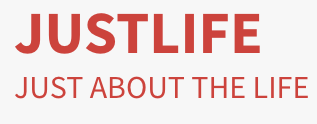Life insurance is a vital financial product that provides security and peace of mind to individuals and families. It ensures that loved ones are financially protected in the event of an untimely death. However, with various types of life insurance policies available, understanding the differences and benefits of each can be daunting. This comprehensive article will explore the different types of life insurance policies, their features, benefits, and how to choose the right policy for your needs.
Introduction
Life insurance serves as a safety net for families, providing financial support in times of need. With numerous options available, it is essential to understand the types of policies to make informed decisions. This article aims to break down the complexities of life insurance into manageable sections, helping readers navigate their choices effectively.
The Importance of Life Insurance
Financial Security for Loved Ones
The primary purpose of life insurance is to provide financial security for dependents after the policyholder’s death. This security can cover various expenses, including:
- Funeral costs
- Mortgage payments
- Childcare expenses
- Education costs
- Outstanding debts
Peace of Mind
Life insurance offers peace of mind, knowing that loved ones will be taken care of financially in the event of an unexpected loss. It allows individuals to focus on their lives without constantly worrying about their family’s financial future.
Overview of Life Insurance Types
Life insurance can be broadly categorized into two main types: term life insurance and permanent life insurance. Each category has its unique features and benefits.
Term Life Insurance
Term life insurance provides coverage for a specified period, typically ranging from 10 to 30 years. If the policyholder passes away during this term, the beneficiaries receive a death benefit. If the term expires and the policyholder is still alive, coverage ends unless renewed.
Features of Term Life Insurance
- Fixed Premiums: Premiums remain constant throughout the term.
- No Cash Value: Term policies do not accumulate cash value.
- Renewable Options: Many term policies offer renewal options at the end of the term.
Types of Term Life Insurance
- Level Term Life Insurance: The death benefit remains constant throughout the policy term.
- Decreasing Term Life Insurance: The death benefit decreases over time, typically used to cover debts like mortgages.
- Increasing Term Life Insurance: The death benefit increases over time to keep pace with inflation or rising family needs.
Permanent Life Insurance
Permanent life insurance provides lifelong coverage as long as premiums are paid. These policies often include a cash value component that grows over time.
Features of Permanent Life Insurance
- Lifetime Coverage: Coverage lasts for the policyholder’s entire life.
- Cash Value Accumulation: A portion of premiums contributes to a cash value that can be borrowed against or withdrawn.
- Flexible Premium Payments: Some permanent policies allow for flexible premium payments.
Types of Permanent Life Insurance
- Whole Life Insurance: Offers fixed premiums and guaranteed death benefits with predictable cash value growth.
- Universal Life Insurance: Provides flexible premiums and adjustable death benefits with cash value growth tied to market interest rates.
- Variable Life Insurance: Allows policyholders to invest cash value in various investment options, potentially leading to higher returns but also increased risk.
- Indexed Universal Life Insurance: Links cash value growth to a stock market index while providing downside protection.
Detailed Examination of Each Type of Policy
Term Life Insurance
Level Term Life Insurance
Level-term life insurance is one of the most straightforward types of term policies, providing a fixed death benefit throughout the policy’s duration.
- Pros:
- Predictable premiums
- Simplicity in understanding coverage
- Ideal for short-term financial obligations
- Cons:
- No cash value accumulation
- Coverage ends after the term expires without renewal
Decreasing Term Life Insurance
Decreasing term life insurance is designed for individuals who want coverage that aligns with decreasing financial obligations, such as a mortgage.
- Pros:
- Lower premiums compared to level-term policies
- Suitable for debt repayment scenarios
- Cons:
- Death benefit decreases over time
- May not provide sufficient coverage if needs increase
Increasing Term Life Insurance
Increasing term life insurance offers a growing death benefit over time, addressing potential inflation and increasing family needs.
- Pros:
- Death benefit increases with inflation
- Good option for young families anticipating higher future expenses
- Cons:
- Higher premiums compared to level-term policies
- Complexity in understanding growth rates and terms
Permanent Life Insurance
Whole Life Insurance
Whole life insurance is a popular form of permanent coverage that guarantees a death benefit and accumulates cash value over time.
- Pros:
- Fixed premiums and guaranteed death benefit
- Cash value grows at a guaranteed rate
- Policy loans available against cash value
- Cons:
- Higher premiums compared to term policies
- Limited flexibility in premium payments and investment options
Universal Life Insurance
Universal life insurance offers more flexibility than whole life by allowing policyholders to adjust premiums and death benefits.
- Pros:
- Flexible premium payments
- Adjustable death benefits based on changing needs
- Cash value growth linked to interest rates
- Cons:
- Complexity in managing premium payments and investments
- Cash value may not grow as predictably as whole life policies
Variable Life Insurance
Variable life insurance allows policyholders to invest their cash value in various investment options, potentially increasing returns but also introducing risk.
- Pros:
- Potential for higher cash value growth through investments
- Flexible premium payments and death benefits
- Cons:
- Investment risks can affect cash value and death benefits
- Requires active management and understanding of investments
Indexed Universal Life Insurance (IUL)
Indexed universal life insurance combines features from both universal and variable policies by linking cash value growth to a stock market index while providing downside protection.
- Pros:
- Potential for higher returns linked to market performance
- Flexibility in premium payments and adjustable death benefits
- Downside protection against market losses
- Cons:
- Complexity in understanding index performance and caps on returns
- Fees associated with managing investments can reduce overall returns
Choosing the Right Type of Policy
Assessing Your Needs
When selecting a life insurance policy, consider your unique financial situation:
- Dependents’ Needs: Evaluate how much coverage your dependents would need if you were no longer there to provide for them.
- Financial Obligations: Consider existing debts such as mortgages or loans that need coverage.
- Long-Term Goals: Think about your long-term financial goals, including retirement planning and wealth transfer.
Comparing Policies
When comparing different types of life insurance:
- Premium Costs: Analyze how much you can afford in monthly premiums.
- Coverage Amounts: Ensure that you select an adequate coverage amount based on your needs.
- Policy Features: Review additional features such as cash value accumulation or flexibility in premium payments.
Consulting with Professionals
Engaging with a licensed insurance agent or financial advisor can provide valuable insights tailored to your specific situation:
- Personalized Recommendations: Professionals can help analyze your financial situation and recommend suitable policies.
- Understanding Complex Terms: They can clarify complex terms and conditions associated with different policies.
- Ongoing Support: Professional guidance can assist with any future changes or adjustments needed in your policy.
Conclusion
Understanding different types of life insurance policies is crucial for making informed decisions about your financial future and ensuring that your loved ones are protected after your passing. By exploring the features, benefits, and drawbacks of each type—term life versus permanent life—individuals can choose a policy that aligns with their specific needs and goals.
This comprehensive guide serves as a resource for navigating the complexities of life insurance, empowering readers to take control of their financial planning effectively. This article provides an extensive overview of “Understanding Different Types of Life Insurance Policies.



